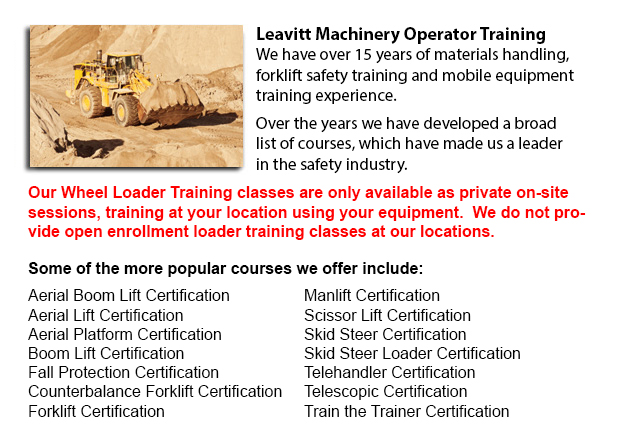
Lift trucks are obtainable in several load capacities and a variety of units. The majority of lift trucks in a typical warehouse setting have load capacities between 1-5 tons. Larger scale models are utilized for heavier loads, like for example loading shipping containers, can have up to fifty tons lift capacity.
The operator could utilize a control to be able to raise and lower the forks, which can likewise be called "blades or tines". The operator of the forklift has the ability to tilt the mast in order to compensate for a heavy loads propensity to tilt the forks downward. Tilt provides an ability to work on rough ground too. There are annual competitions intended for experienced forklift operators to contend in timed challenges and obstacle courses at regional lift truck rodeo events.
General utilization
Forklifts are safety rated for loads at a particular utmost weight and a specific forward center of gravity. This essential information is supplied by the maker and situated on a nameplate. It is vital cargo do not exceed these specifications. It is prohibited in a lot of jurisdictions to interfere with or remove the nameplate without obtaining consent from the lift truck maker.
Most forklifts have rear-wheel steering in order to increase maneuverability inside tight cornering conditions and confined areas. This particular kind of steering differs from a drivers' initial experience together with various vehicles. Since there is no caster action while steering, it is no necessary to use steering force to be able to maintain a continuous rate of turn.
One more unique characteristic common with forklift operation is unsteadiness. A constant change in center of gravity happens between the load and the forklift and they should be considered a unit during utilization. A lift truck with a raised load has centrifugal and gravitational forces that can converge to result in a disastrous tipping accident. To be able to prevent this possibility, a lift truck must never negotiate a turn at speed with its load elevated.
Forklifts are carefully designed with a cargo limit intended for the forks. This limit is decreased with undercutting of the load, that means the load does not butt against the fork "L," and also lowers with blade elevation. Normally, a loading plate to consult for loading reference is positioned on the forklift. It is dangerous to utilize a lift truck as a personnel hoist without first fitting it with certain safety equipment such as a "cherry picker" or "cage."
Forklift use in warehouse and distribution centers
Essential for whichever warehouse or distribution center, the forklift needs to have a safe setting in which to accommodate their safe and efficient movement. With Drive-In/Drive-Thru Racking, a forklift must go in a storage bay that is several pallet positions deep to set down or obtain a pallet. Operators are often guided into the bay through rails on the floor and the pallet is located on cantilevered arms or rails. These confined manoeuvres require trained operators to be able to carry out the job safely and efficiently. As each and every pallet requires the truck to go into the storage structure, damage done here is more common than with various kinds of storage. When designing a drive-in system, considering the dimensions of the fork truck, as well as overall width and mast width, should be well thought out to be certain all aspects of a safe and effective storage facility.
-
Warehouse Forklift Safety Training British Columbia
Warehouse Forklift Safety Training British Columbia - The corporation would face claims for liability when damage and injuries are sustained in an accident at the workplace. Warehouses can be a hazardous place to work for its workers, making employee... More -
Loader Operator Certification British Columbia
Loader Operator Certification British Columbia - Courses Offered For Getting Loader Operator Certification - Certification for forklifts are required to guarantee the safe operation of forklifts for those employers in industrial, warehouse or constru... More -
Crane / Overhead Crane / Self-Erect Crane / Truck Mounted Crane / Hydraulic Cranes Training in British Columbia
Bridge cranes or likewise called overhead cranes are actually a type of industrial material handling crane making use of a line and hook device that runs on a horizontal beam running along two widely separated rails. Numerous overhead cranes could be... More -
Scissor Lift License British Columbia
Scissor Lift License British Columbia - The operation of scissor lifts carries an inherent chance of danger. Whichever type of powered machine requires correct handling to prevent accidents causing injury or damage. Companies need to make certain tha... More -
Heavy Equipment Training Schools British Columbia
Heavy Equipment Training Schools British Columbia - There are a lot of heavy equipment training schools to select from. If you want to get to the best, it is important to check various aspects of the school in order to ascertain the level of educatio... More -
Telehandler Training British Columbia
Telehandler Training British Columbia - Telescopic handlers usually called telehandlers for short, are an extremely popular piece of heavy construction equipment. They are commonly utilized in the construction and agricultural trades. These machines... More -
Forklift Training Courses British Columbia
Forklift Training Courses British Columbia - When forklift operator safety training is tailored for illiteracy, training time is lessened by 50%. Forklift training certification, lift-truck operator driver safety training evaluation, and train the tr... More -
Heavy Equipment Operator Training British Columbia
Heavy Equipment Operator Training British Columbia - Heavy equipment operator training facilities which provide quality standards in the business, providing field performance work and added machinery training are highly sought after training features... More

Forklift Training British Columbia
TOLL FREE: 1-888-254-6157
forklifttrainingbritishcolumbia.com
Email Us
About Us


